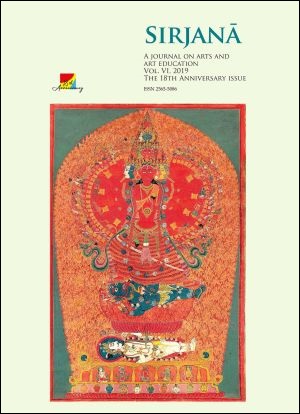Art Creations of Pramila Giri
DOI:
https://doi.org/10.3126/sirjana.v6i1.39670Keywords:
Pramila Giri, BHAIRAVAbstract
During the 60s and 70s, various new concepts and trends of European modern arts were slowly and nobly emerging in Nepali Art. Traditional Paubha artists and some senior artists such as Chandraman Singh Maskey, Tej Bahadur Chitrakar were following the conventional grammar, characteristics and themes in their art creations.
There were virtually no women artists in the creative art scene. Later Pramila Giri and Shilu Payri along with some other female artists appeared on the art stage with new ideas and concepts of modernity. Artist Giri in her early stage, was also following the conventional approaches, but later she began to experiment and present her new art forms with mythical figures and themes.
Her analytical thoughts and search led her to use the various forms, images and symbols of religious and mythical figures of BHAIRAV in her art creations. Thus, she started in presenting the figures and forms plus sculptures on her large size canvas. It was completely a noble approach and presentation.
BHAIRAV, a gigantic demonic figure but with all the divine powers is regarded as the incarnation of Lord Shiva. Red, white, blue, black colors are used to represent a chosen incarnation of the Lord.
Thus, if the viewers are familiar with the mythical figures of Lord BHAIRAV, it will be easier to understand the use of colours and the presentations of the figures in her art creations.




